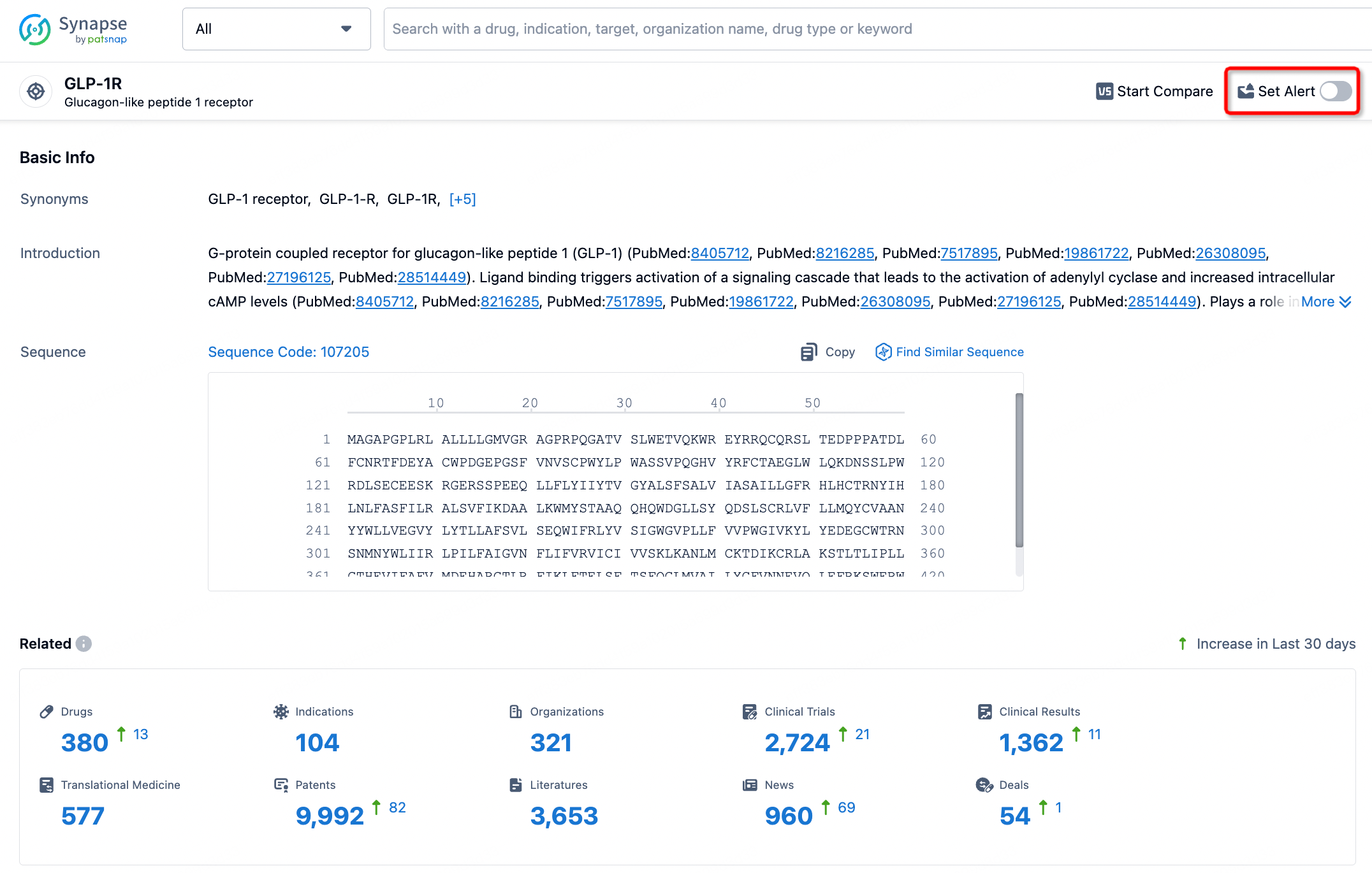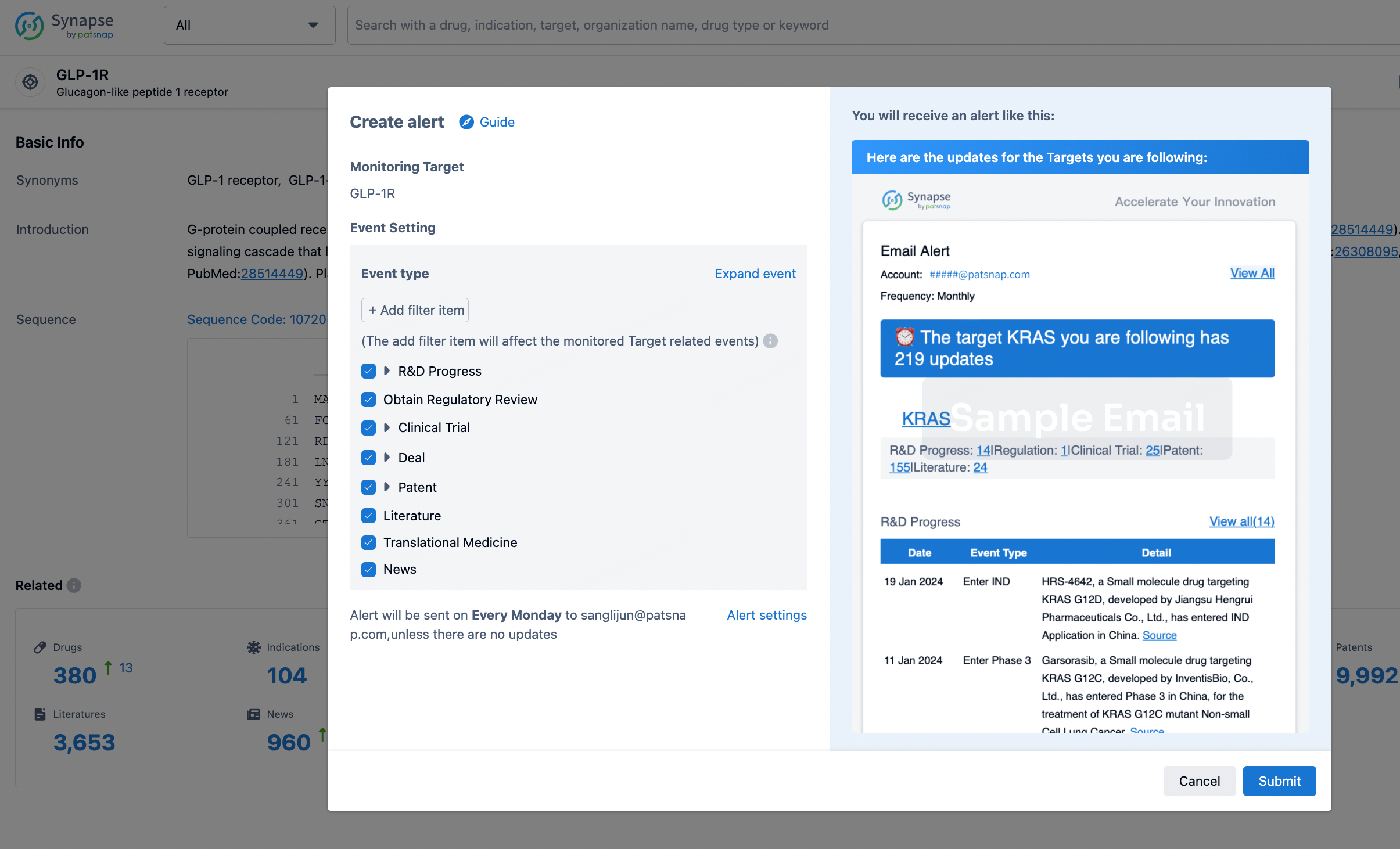Request Demo
What are ROR2 inhibitors and how do they work?
21 June 2024
In the realm of modern medicine, the pursuit of targeted therapies has led to numerous breakthroughs, particularly in the treatment of cancer and other chronic diseases. One such promising area of research involves the development of ROR2 inhibitors. These inhibitors are designed to target a specific receptor known as ROR2, which plays a critical role in various cellular processes.
**Introduction to ROR2 Inhibitors**
Receptor tyrosine kinases (RTKs) are a family of receptors that play a pivotal role in the regulation of cell proliferation, differentiation, and survival. Among these, ROR2 (Receptor Tyrosine Kinase-Like Orphan Receptor 2) has garnered significant interest for its involvement in developmental processes and disease progression. ROR2 is part of the non-canonical Wnt signaling pathway, which is distinct from the more widely known canonical Wnt pathway involved in embryogenesis and cancer. This receptor is crucial for proper skeletal, cardiovascular, and neural development. However, aberrant ROR2 signaling has been implicated in various pathological conditions, including cancer.
ROR2 inhibitors are compounds designed to specifically block the activity of the ROR2 receptor. By inhibiting ROR2, these compounds aim to modulate abnormal cellular signaling pathways that contribute to disease progression. The development of ROR2 inhibitors represents a promising frontier in targeted therapy, offering the potential to treat conditions with high specificity and reduced side effects compared to traditional chemotherapy.
**How Do ROR2 Inhibitors Work?**
The mechanism of action of ROR2 inhibitors revolves around their ability to selectively bind to the ROR2 receptor and block its activity. In a normal physiological context, ROR2 interacts with Wnt5a, a ligand in the non-canonical Wnt signaling pathway. This interaction triggers downstream signaling cascades that regulate various cellular functions, including migration, invasion, and proliferation. In cancerous cells, overexpression or abnormal activation of ROR2 can lead to uncontrolled cell growth and metastasis.
ROR2 inhibitors work by preventing the binding of Wnt5a to ROR2, thereby disrupting the downstream signaling pathways. This inhibition can halt the progression of cancer cells, reduce their invasive capabilities, and potentially lead to apoptosis, or programmed cell death. The selectivity of ROR2 inhibitors is crucial, as it ensures that normal cells with low or no expression of ROR2 are spared from the drug's effects, thereby minimizing collateral damage and improving the therapeutic index.
**What Are ROR2 Inhibitors Used For?**
The primary application of ROR2 inhibitors is in the treatment of cancer. Several studies have demonstrated the overexpression of ROR2 in various malignancies, including osteosarcoma, renal cell carcinoma, melanoma, and breast cancer. By targeting ROR2, these inhibitors aim to curb tumor growth and prevent metastasis, offering a novel approach to cancer therapy.
Beyond oncology, ROR2 inhibitors are being explored for their potential in treating fibrotic diseases. Fibrosis is characterized by the excessive accumulation of extracellular matrix proteins, leading to tissue scarring and organ dysfunction. ROR2 has been implicated in the pathogenesis of fibrotic diseases such as idiopathic pulmonary fibrosis and liver fibrosis. Inhibiting ROR2 could potentially mitigate the fibrotic response, offering relief to patients suffering from these debilitating conditions.
Additionally, there is emerging interest in the role of ROR2 inhibitors in regenerative medicine. Given ROR2's involvement in developmental processes, modulating its activity could promote tissue regeneration and repair. This has potential applications in conditions such as wound healing and neurodegenerative diseases, where tissue regeneration is critical.
In conclusion, ROR2 inhibitors represent a promising avenue in the field of targeted therapy. By specifically targeting the ROR2 receptor, these inhibitors offer the potential to treat a variety of conditions with high specificity and reduced side effects. While much research is still needed to fully understand their potential and bring these inhibitors to clinical use, the early findings are promising. As our understanding of ROR2 and its role in disease continues to evolve, so too will the development of innovative therapies aimed at improving patient outcomes.
**Introduction to ROR2 Inhibitors**
Receptor tyrosine kinases (RTKs) are a family of receptors that play a pivotal role in the regulation of cell proliferation, differentiation, and survival. Among these, ROR2 (Receptor Tyrosine Kinase-Like Orphan Receptor 2) has garnered significant interest for its involvement in developmental processes and disease progression. ROR2 is part of the non-canonical Wnt signaling pathway, which is distinct from the more widely known canonical Wnt pathway involved in embryogenesis and cancer. This receptor is crucial for proper skeletal, cardiovascular, and neural development. However, aberrant ROR2 signaling has been implicated in various pathological conditions, including cancer.
ROR2 inhibitors are compounds designed to specifically block the activity of the ROR2 receptor. By inhibiting ROR2, these compounds aim to modulate abnormal cellular signaling pathways that contribute to disease progression. The development of ROR2 inhibitors represents a promising frontier in targeted therapy, offering the potential to treat conditions with high specificity and reduced side effects compared to traditional chemotherapy.
**How Do ROR2 Inhibitors Work?**
The mechanism of action of ROR2 inhibitors revolves around their ability to selectively bind to the ROR2 receptor and block its activity. In a normal physiological context, ROR2 interacts with Wnt5a, a ligand in the non-canonical Wnt signaling pathway. This interaction triggers downstream signaling cascades that regulate various cellular functions, including migration, invasion, and proliferation. In cancerous cells, overexpression or abnormal activation of ROR2 can lead to uncontrolled cell growth and metastasis.
ROR2 inhibitors work by preventing the binding of Wnt5a to ROR2, thereby disrupting the downstream signaling pathways. This inhibition can halt the progression of cancer cells, reduce their invasive capabilities, and potentially lead to apoptosis, or programmed cell death. The selectivity of ROR2 inhibitors is crucial, as it ensures that normal cells with low or no expression of ROR2 are spared from the drug's effects, thereby minimizing collateral damage and improving the therapeutic index.
**What Are ROR2 Inhibitors Used For?**
The primary application of ROR2 inhibitors is in the treatment of cancer. Several studies have demonstrated the overexpression of ROR2 in various malignancies, including osteosarcoma, renal cell carcinoma, melanoma, and breast cancer. By targeting ROR2, these inhibitors aim to curb tumor growth and prevent metastasis, offering a novel approach to cancer therapy.
Beyond oncology, ROR2 inhibitors are being explored for their potential in treating fibrotic diseases. Fibrosis is characterized by the excessive accumulation of extracellular matrix proteins, leading to tissue scarring and organ dysfunction. ROR2 has been implicated in the pathogenesis of fibrotic diseases such as idiopathic pulmonary fibrosis and liver fibrosis. Inhibiting ROR2 could potentially mitigate the fibrotic response, offering relief to patients suffering from these debilitating conditions.
Additionally, there is emerging interest in the role of ROR2 inhibitors in regenerative medicine. Given ROR2's involvement in developmental processes, modulating its activity could promote tissue regeneration and repair. This has potential applications in conditions such as wound healing and neurodegenerative diseases, where tissue regeneration is critical.
In conclusion, ROR2 inhibitors represent a promising avenue in the field of targeted therapy. By specifically targeting the ROR2 receptor, these inhibitors offer the potential to treat a variety of conditions with high specificity and reduced side effects. While much research is still needed to fully understand their potential and bring these inhibitors to clinical use, the early findings are promising. As our understanding of ROR2 and its role in disease continues to evolve, so too will the development of innovative therapies aimed at improving patient outcomes.
How to obtain the latest development progress of all targets?
In the Synapse database, you can stay updated on the latest research and development advances of all targets. This service is accessible anytime and anywhere, with updates available daily or weekly. Use the "Set Alert" function to stay informed. Click on the image below to embark on a brand new journey of drug discovery!
AI Agents Built for Biopharma Breakthroughs
Accelerate discovery. Empower decisions. Transform outcomes.
Get started for free today!
Accelerate Strategic R&D decision making with Synapse, PatSnap’s AI-powered Connected Innovation Intelligence Platform Built for Life Sciences Professionals.
Start your data trial now!
Synapse data is also accessible to external entities via APIs or data packages. Empower better decisions with the latest in pharmaceutical intelligence.


